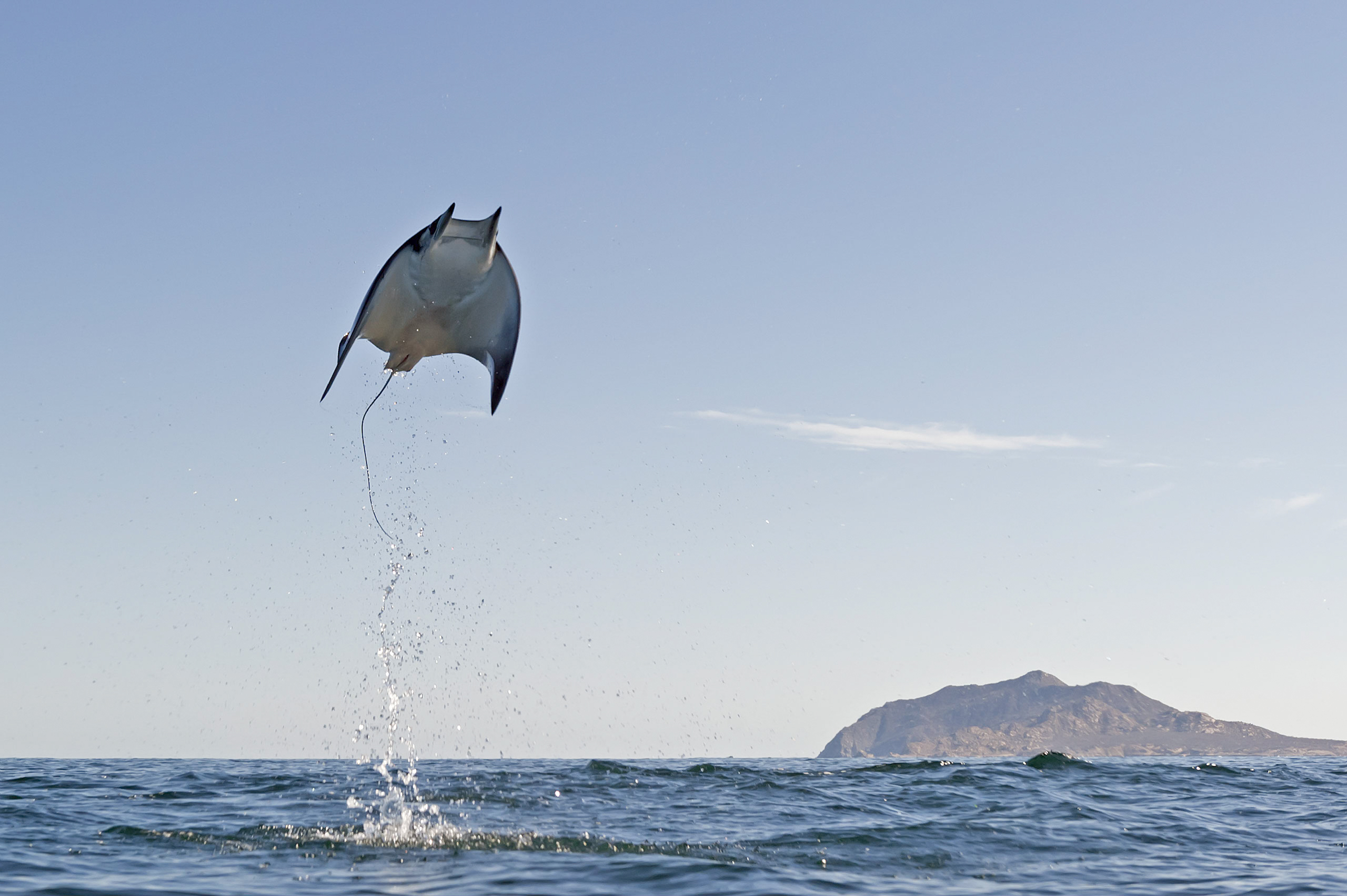The Amazing, Flying Munk’s Devil Ray
This small ray can breach several feet into the air, causing a loud slapping sound upon its return to the ocean that has earned it the nickname “tortilla.”

A Munk's devil ray in Cabo Pulmo, Mexico. Photo by Octavio Aburto / iLCP
The Munk’s devil ray, pictured above, got the nickname “tortilla” from the fishermen in the Gulf of California where the species lives, says Octavio Aburto, an assistant professor at the Scripps Institution of Oceanography, who took the photo.
One reason for the moniker, he says, is because this species is smaller than the three other devil ray species also found in the Gulf, averaging about three feet in wingspan compared with two or three times that size for its brethren. And secondly, the sound of the ray smacking its belly onto the ocean surface after jumping into the air is reminiscent of the slapping of tortilla dough between a chef’s palms.
All 9 species of devil rays leap out of the water, but no one yet knows why, says Giuseppe Notarbartolo di Sciara, a marine ecologist who was the first to describe the Munk’s devil ray while he was earning a Ph.D at the Scripps Institution of Oceanography in the early 1980s. But as far as scientists can tell, the Munk’s devil ray is the only species that engages in “spectacular, frequently repeated jumping while in large-to-humongous groups,” he says, although it’s not yet clear if there’s a pattern to their leaping.
Aburto has seen the rays jump as high as 10 feet in the air—and the noise they make upon crashing back to the surface is spectacular. “It’s like raining in the middle of the ocean,” says Aburto, who is also a member of the International League of Conservation Photographers.

Munk’s devil rays are very social animals and have been spotted traveling in groups that number in the hundreds of thousands. Breaching and slapping the water en masse could be a way that the rays communicate with each other, Notarbartolo di Sciara suggests, although he emphasizes that no research has been done to test that idea.
“[All devil rays] have a system of pores on the skin that can detect low frequency vibrations,” he says, so it’s possible that Munk’s devil rays are sensitive to the loud noise that they make when they land after jumping. But, he adds, “I could be completely wrong.”
The Munk’s devil ray is named for the renowned oceanographer Walter Munk, whom Notarbartolo di Sciara calls a mentor. Munk was able to see the animal in person for the first time earlier this year and had his own theory for why they breach: “I said they just jump for the joy of it. Why shouldn’t they jump for the joy?”
Beyond the mystery of their leaping, there’s a lot about Munk’s devil rays and other rays that has yet to be studied. “Devil rays have really been neglected by science for a long time,” says Notarbartolo di Sciara. But there’s been a surge of general interest in recent years in part because of the popularity of diving, which has given more people the opportunity to see rays firsthand—particularly manta rays, which, by extension, attract attention to other ray species—and because some Asian and Southeast Asian countries have begun to voraciously hunt rays for their filter plates to use in Chinese alternative medicine, according to Notarbartolo di Sciara. Wildlife films featuring Munk’s devil rays in action have also piqued the public’s curiosity, he says.

Chau Tu is an associate editor at Slate Plus. She was formerly Science Friday’s story producer/reporter.